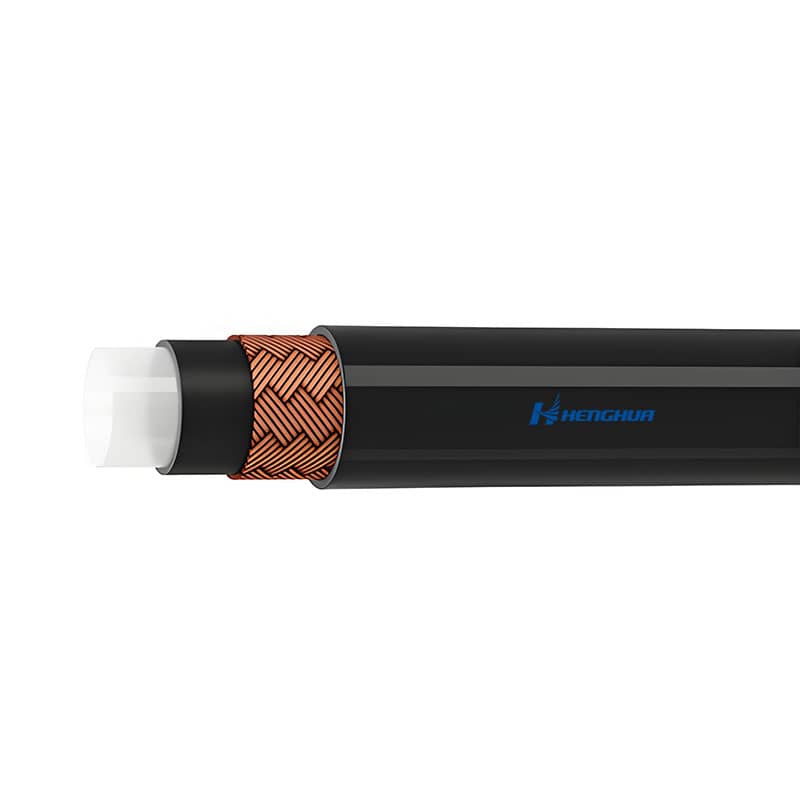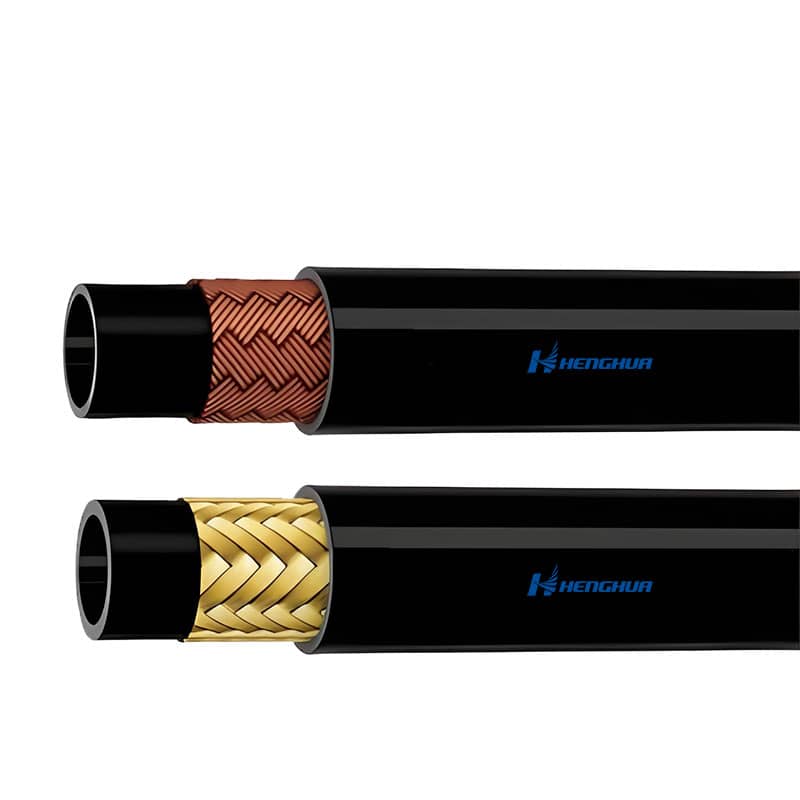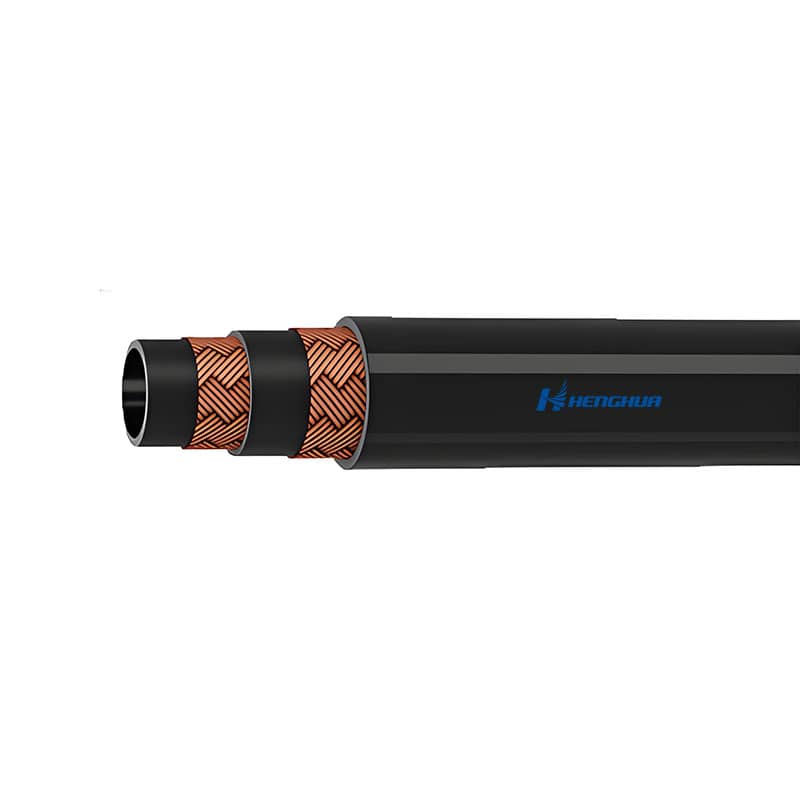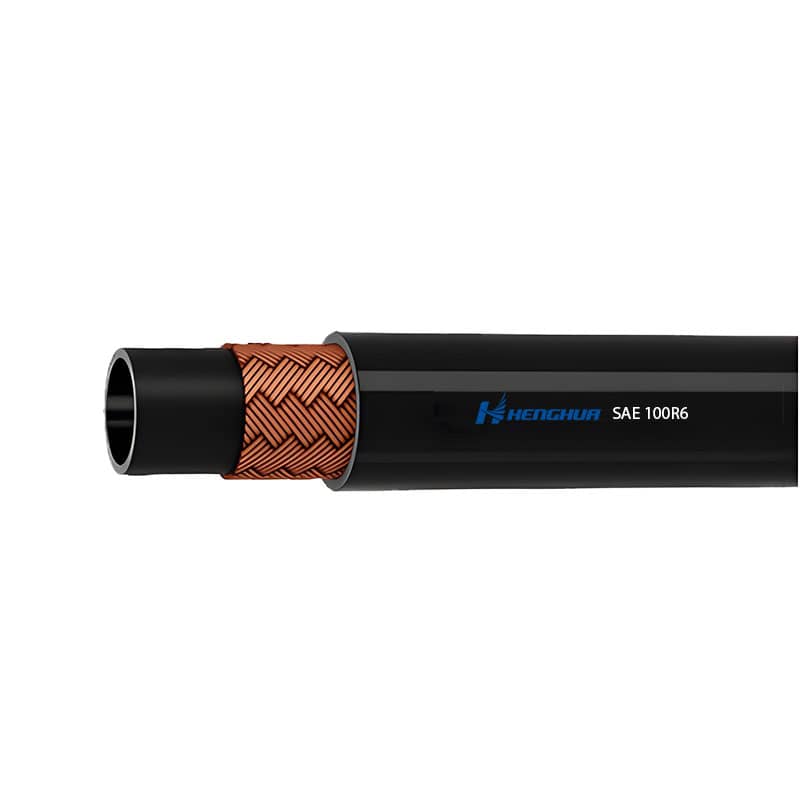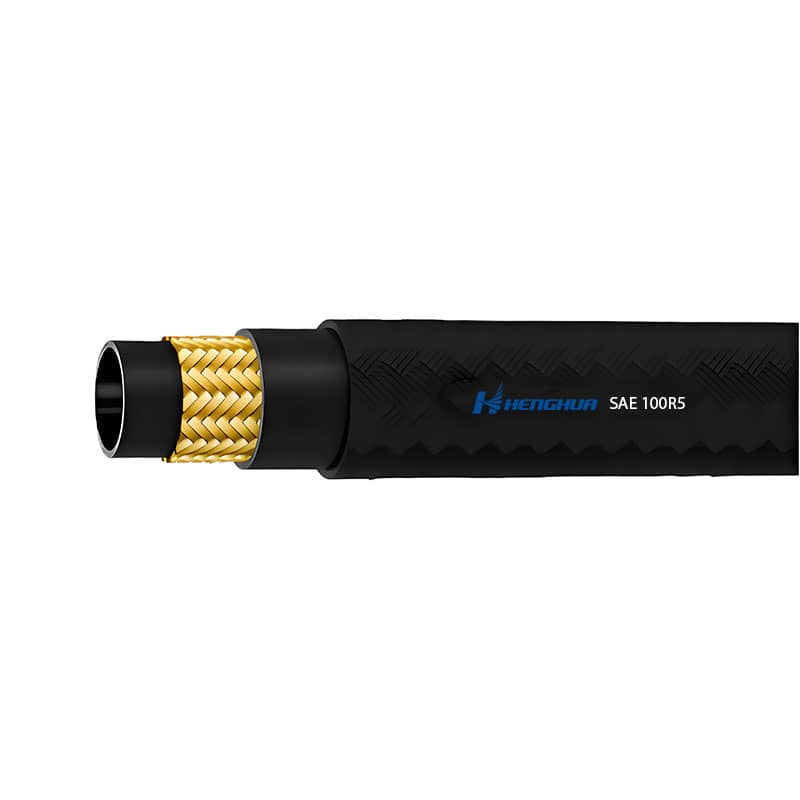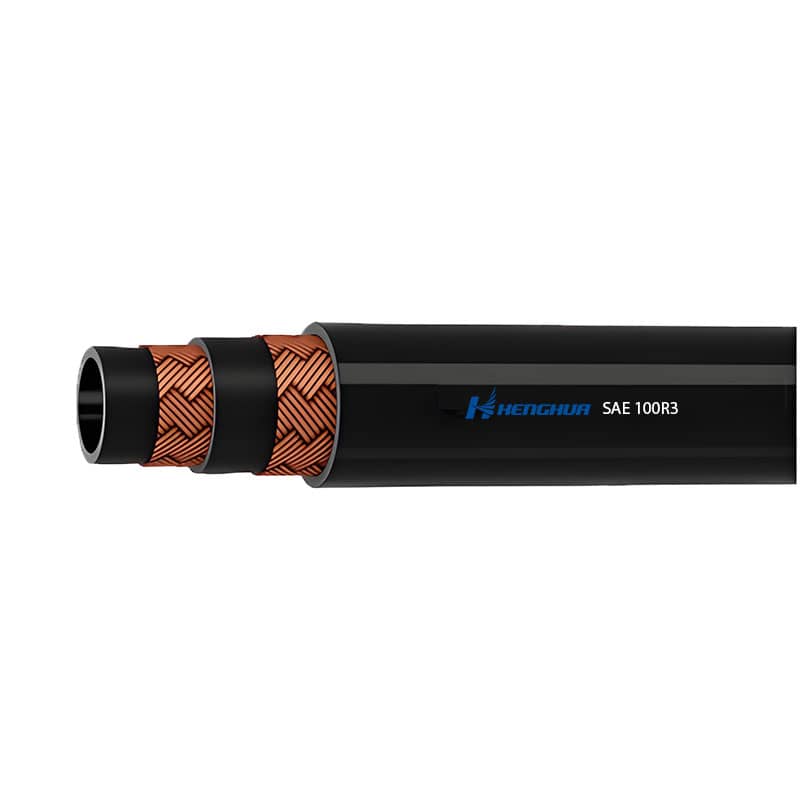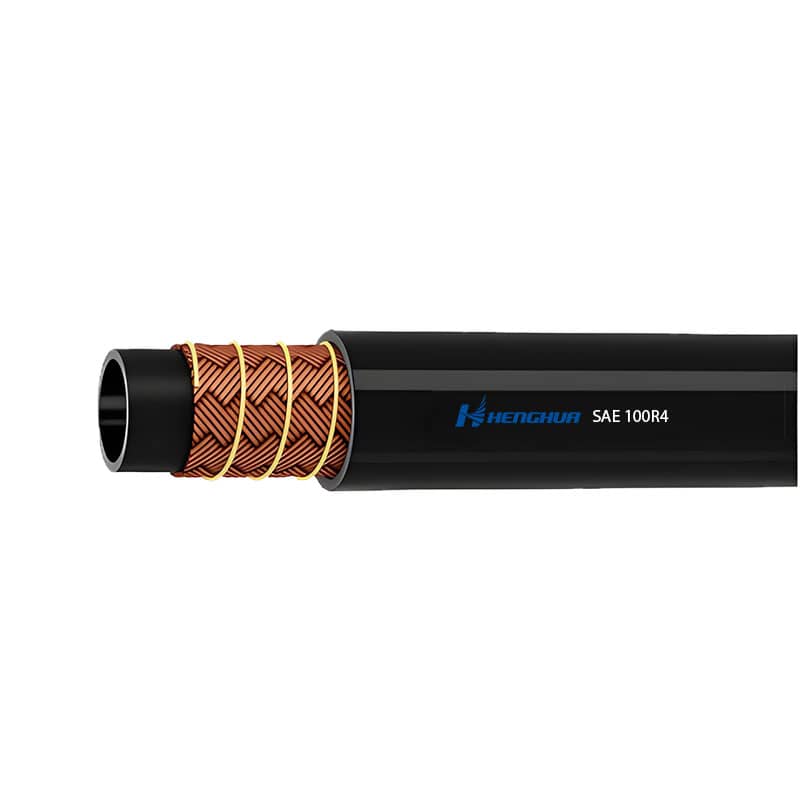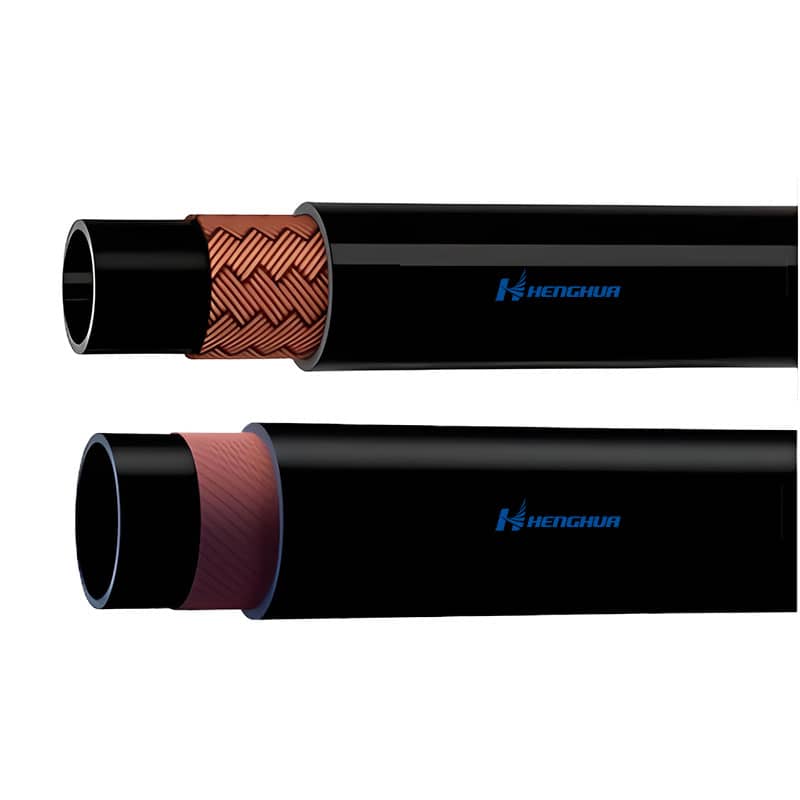Hydraulic Hose Assembly Guide for Engineers and Technicians
Hydraulic hose assemblies are an essential component of hydraulic systems used in a wide range of industries, including manufacturing, construction, automotive, and aerospace. These assemblies play a pivotal role in ensuring the smooth transmission of hydraulic fluid, which powers various machinery and equipment. The performance and longevity of hydraulic systems are heavily dependent on the correct selection, installation, and maintenance of hose assemblies.
Many engineers and technicians face challenges when selecting the correct hydraulic hose assemblies for their specific systems. The wrong choice of hose, improper assembly, or inadequate maintenance can result in premature hose failure, inefficiency, and costly downtime. Understanding the critical role of hydraulic hose assemblies and how to properly choose and maintain them is crucial to preventing these issues.
This article aims to provide a comprehensive guide for engineers and technicians, helping them understand the importance of hydraulic hose assemblies and how to use them effectively. The goal is to enhance the performance and safety of hydraulic systems by offering insights into hose selection, assembly procedures, and maintenance best practices. By addressing the common challenges professionals face, this guide will help improve system reliability and reduce the risk of system failure.
How Hydraulic Hose Assemblies Impact Fluid Flow and Pressure
Hydraulic hose assemblies ensure the smooth transfer of hydraulic fluid from one part of the system to another. The correct hose assembly maintains fluid flow while withstanding high pressure, preventing leaks or bursts that could compromise system efficiency. The design and quality of hose assemblies are critical in managing fluid pressure, ensuring that the system operates within safe parameters. A well-designed hose assembly also minimizes energy loss and ensures the hydraulic fluid reaches its destination without resistance, which is essential for maintaining operational performance in industrial machinery.
What is a Hydraulic Hose Assembly?
A hydraulic hose assembly is a vital component in hydraulic systems, consisting of several parts that work together to deliver fluid under pressure to various machinery and equipment. The assembly is designed to transport hydraulic fluid from one part of the system to another while withstanding high pressure, ensuring safe and efficient operation.
Key Components of a Hydraulic Hose Assembly
-
Hydraulic Hose: The hydraulic hose is the primary conduit through which the hydraulic fluid flows. It is designed to withstand high-pressure conditions and extreme temperatures. Typically made from synthetic rubber, thermoplastics, or steel-braided materials, the hose’s construction ensures durability and flexibility for a variety of applications. It can come in various sizes and pressure ratings, allowing engineers to select the best option for their systems.
-
Fittings: Fittings are the connectors that link the hydraulic hose to other components in the hydraulic system, such as pumps, valves, and cylinders. The fittings ensure a secure and leak-free connection between the hose and the system. They come in various types, including male and female threads, flanged, or quick-connect fittings, depending on the specific requirements of the system.
-
Couplings: Couplings are used to connect the hydraulic hose to different equipment. They are designed to withstand high-pressure environments and provide a leak-proof connection. Couplings can be reusable or non-reusable, depending on the type of system and the maintenance cycle. They also play a crucial role in preventing contamination of the hydraulic fluid, which could lead to system malfunctions.
The Impact of Poor-Quality or Incorrectly Assembled Hoses
A poor-quality or incorrectly assembled hydraulic hose can significantly impact the efficiency and safety of a hydraulic system. If the hose, fittings, or couplings are not of the right material or pressure rating, or if they are poorly installed, it can lead to the following issues:
-
Leaks: Improper fittings or low-quality hoses can lead to leaks, resulting in fluid loss and potential contamination of the environment or system.
-
System Failures: If the hose assembly cannot withstand the pressure or temperature conditions of the system, it may burst or fail, leading to costly downtime and potential damage to the equipment.
-
Inefficiency: A poorly assembled hydraulic hose can cause resistance to fluid flow, which leads to energy loss and decreased system efficiency. This, in turn, can result in longer operating times and higher operational costs.
Ensuring high-quality materials and precise assembly can prevent these issues, optimize system performance, and extend the lifespan of the hydraulic equipment. Regular inspections and proper maintenance are key to maintaining the integrity of the hydraulic hose assembly.
Common Types of Hydraulic Hoses and Their Applications
Selecting the right hydraulic hose is critical for ensuring the efficiency, safety, and longevity of your system. The choice depends on factors such as the pressure rating, fluid type, operating environment, and flexibility requirements of your application. Below are three common types of hydraulic hoses and guidance on how to choose the right one based on your system specifications:
1. Wire-Braid Reinforced Hoses
Wire-braid reinforced hoses are typically used in medium-pressure systems where flexibility is important. The construction involves one or more layers of braided steel wire around the hose, providing strength and resistance to pressure. These hoses are ideal for applications that require a moderate level of flexibility and are commonly used in agricultural machinery, automotive systems, and lighter industrial equipment.
-
Applications: Suitable for systems with pressures ranging from 2000 to 4000 psi.
-
Advantages: Offers a balance of flexibility and pressure resistance. Generally cost-effective for medium-duty applications.
-
When to Use: Wire-braid reinforced hoses are ideal when you need a hose that combines strength with moderate flexibility, particularly for less demanding systems.
2. Spiral-Wire Reinforced Hoses
Spiral-wire reinforced hoses are designed for high-pressure systems and are built to withstand extreme conditions. These hoses feature multiple layers of tightly wound steel wire spirals, which provide enhanced strength and flexibility. Spiral-wire hoses are ideal for heavy-duty machinery or systems that experience high pressures, such as those in mining, construction, and heavy manufacturing equipment.
-
Applications: Suitable for systems with pressures exceeding 4000 psi, often up to 10,000 psi or more.
-
Advantages: High durability and excellent resistance to high-pressure environments. Spiral design allows for greater flexibility, even in demanding environments.
-
When to Use: Choose spiral-wire hoses for applications involving high pressure and where the system requires a durable, flexible hose that can handle extreme stress.
3. Thermoplastic Hoses
Thermoplastic hoses are made from synthetic materials and are commonly used in lower-pressure applications. These hoses are lightweight, resistant to chemicals, and can maintain performance even in harsh conditions. Their flexibility makes them ideal for applications where ease of movement is crucial, and they are commonly used in industries like agriculture, automotive, and light manufacturing.
-
Applications: Suitable for systems with lower pressure (typically up to 2000 psi).
-
Advantages: Lightweight, resistant to abrasion and chemical exposure, and capable of performing in environments with a wide temperature range. These hoses are often preferred in situations where flexibility and chemical resistance are key requirements.
-
When to Use: Ideal for applications in environments where flexibility, chemical resistance, and a lighter weight hose are needed, such as in low-pressure systems or portable equipment.
Guidance on Selecting Hydraulic Hoses
To select the right hydraulic hose, consider the following specifications:
-
Pressure Requirements: Ensure the hose can withstand the maximum pressure your system will operate under. The hose should have a pressure rating that exceeds the system’s operating pressure to provide an additional safety margin.
-
Fluid Type: Different hoses are designed for compatibility with specific fluids, including oils, water-based fluids, and chemicals. Make sure the hose material is compatible with the hydraulic fluid used in your system.
-
Temperature Resistance: The operating environment’s temperature range should be factored into your choice. Hoses may degrade or become less flexible if exposed to extreme heat or cold.
-
Flexibility: Consider the required flexibility for your system. If the hose needs to be routed around corners or move with machinery, a more flexible hose like a thermoplastic one may be necessary.
-
Durability and Environment: For outdoor or rough environments, choose hoses that can withstand abrasion, UV exposure, or chemical exposure. Spiral-wire hoses are more durable in high-stress conditions, while thermoplastic hoses excel in chemical and environmental resistance.
By carefully considering these factors, you can select the best hydraulic hose to optimize the performance, efficiency, and safety of your hydraulic system.
Materials and Compatibility: Choosing the Right Hose for Your Needs
Selecting the appropriate material for hydraulic hoses is crucial to ensure the safety, longevity, and efficiency of your system. The wrong material can lead to degradation, leaks, or even catastrophic failure. Understanding the material properties and their compatibility with fluids and environmental factors is essential. Here’s a breakdown of common hose materials and their applications:
1. Rubber Hoses
Rubber hoses are versatile and widely used in general industrial applications. They are particularly favored for their flexibility and ability to withstand both high pressure and varied temperatures. Rubber hoses can handle a wide range of fluids, making them a go-to choice in industries like agriculture, automotive, and light industrial machinery.
-
Advantages: Flexible, durable, and cost-effective. Rubber hoses can withstand moderate pressures and are resistant to common oils, water-based fluids, and gases.
-
When to Use: Best suited for general-purpose applications, such as industrial equipment and systems where flexibility and moderate chemical resistance are needed.
-
Considerations: Rubber hoses may degrade in environments with high UV exposure or when exposed to aggressive chemicals over extended periods.
2. Thermoplastic Hoses
Thermoplastic hoses are made from synthetic polymers and are chemically resistant, making them ideal for applications involving diverse fluid types, including aggressive chemicals, oils, and water-based solutions. These hoses are also lightweight, flexible, and resistant to abrasion.
-
Advantages: Highly resistant to chemical exposure and abrasion, thermoplastic hoses offer excellent flexibility in tight spaces and under pressure. They are also resistant to UV and ozone degradation.
-
When to Use: Ideal for industries such as chemical processing, pharmaceuticals, and food & beverage, where chemical compatibility and lightness are crucial.
-
Considerations: Although thermoplastic hoses excel in many environments, they can be less durable in extreme temperatures and may require more careful handling compared to rubber hoses under heavy mechanical stress.
3. Stainless Steel Hoses
Stainless steel hoses are the go-to solution for extreme conditions, where high temperatures or exposure to harsh chemicals are a concern. They feature a flexible stainless steel outer braid, which offers excellent protection against wear and environmental damage while maintaining fluid containment at high pressure.
-
Advantages: High-temperature resistance (up to 700°F), resistance to harsh chemicals, and outstanding mechanical protection. Stainless steel hoses also have excellent durability, especially in high-pressure and high-stress environments.
-
When to Use: Best suited for extreme environments, such as high-temperature systems, oil and gas industries, or any application where chemical exposure or wear from abrasive materials is a concern.
-
Considerations: While stainless steel hoses offer excellent protection, they can be less flexible and more expensive than rubber or thermoplastic options. Proper installation is essential to maintain performance.
Chemical Compatibility and Environmental Considerations
When choosing the right hose, it’s not just about the material’s strength and flexibility—it's crucial to consider chemical compatibility and how the hose will perform in the specific environment. Here’s what to keep in mind:
-
Chemical Compatibility: Each material has varying resistance to different chemicals. For example, rubber hoses may degrade when exposed to strong acids or ozone, while thermoplastic hoses are better suited for a wider variety of chemicals. Stainless steel hoses, on the other hand, offer the highest level of chemical resistance but may still have limitations in some acidic environments.
-
Pressure Resistance: Ensure that the hose you select can handle the required operating pressure of your system. Rubber and thermoplastic hoses are often rated for moderate pressures, while stainless steel hoses can handle much higher pressures, making them ideal for heavy-duty systems.
-
Environmental Conditions: Consider the external environment where the hose will be used. If the hose will be exposed to UV radiation, abrasion, or extreme temperatures, you’ll need a more robust material. Thermoplastic hoses are excellent for UV resistance, while stainless steel hoses provide superior protection against mechanical damage in rugged environments.
Making the Right Choice for Your System
To ensure the optimal performance and longevity of your hydraulic system, consider these key points:
-
Fluid Type: Make sure the hose material is compatible with the fluid used in your system. A chemical resistance chart can help identify which materials will hold up to specific fluids.
-
Pressure and Temperature: Check the system’s pressure and temperature requirements and select a hose material that can withstand these extremes without failure.
-
Flexibility and Durability: Depending on the required flexibility and environmental conditions, you may need a more rigid or flexible hose material. Rubber and thermoplastic hoses offer more flexibility, while stainless steel provides durability in demanding conditions.
By carefully considering the material properties, pressure requirements, chemical compatibility, and environmental conditions, you can select the best hydraulic hose for your needs, preventing early failures and ensuring optimal system performance.
Hydraulic Fittings: The Unsung Heroes of Hose Assemblies
While hydraulic hoses are essential for fluid transport, hydraulic fittings are just as crucial for ensuring a secure and leak-free system. Improperly fitted hoses can lead to leaks, system failures, or even safety hazards. Understanding the types of fittings and how to properly install them is vital for maintaining the integrity of your hydraulic system.
1. Crimped Fittings
Crimped fittings are widely used in industrial environments because of their reliability and durability. These fittings are attached to the hose using a crimping tool, which compresses the fitting to the hose, creating a strong, permanent bond. Crimped fittings are designed for high-pressure applications and are known for their resistance to leaks, even under extreme operating conditions.
-
Advantages: Crimped fittings provide a tight, secure seal, making them ideal for high-pressure systems that require leak prevention. They are durable and can withstand harsh environments.
-
Applications: These are common in industries such as construction, mining, and agriculture, where robust performance is critical.
2. Threaded Fittings
Threaded fittings are simple to install and offer a reliable seal for low-pressure or quick-disconnect applications. These fittings have male and female threads that screw together, creating a secure connection between hoses and equipment. Threaded fittings are best used for applications where the system is not exposed to high pressure but still requires a tight, leak-proof seal.
-
Advantages: Easy to install and remove, threaded fittings are ideal for systems where hoses need to be disconnected frequently.
-
Applications: These are commonly used in low-pressure systems, quick-connect fittings, and situations where maintenance requires easy disassembly, such as automotive service stations and air compressors.
3. Push-On Fittings
Push-on fittings are designed for quick installation without the need for crimping or threading. The hose simply slides onto the fitting, creating a friction-based seal. While they are not suitable for high-pressure systems, push-on fittings are perfect for low-pressure applications where ease of installation is a priority.
-
Advantages: Fast and easy to install, these fittings require no special tools. They are cost-effective and often used in temporary or non-critical applications.
-
Applications: Commonly used in low-pressure fluid transport systems, such as fuel lines or vacuum systems, and applications where quick changes are necessary.
Choosing the Right Fitting for Your Application
When selecting the appropriate hydraulic fitting, several factors must be considered:
-
Hose Material: The type of material your hose is made from will influence the fitting choice. For instance, rubber hoses often require crimped or push-on fittings, while thermoplastic hoses may be better suited for threaded fittings.
-
Pressure Requirements: High-pressure systems demand more durable and secure fittings, such as crimped fittings, to prevent leaks. For low-pressure systems, threaded or push-on fittings may be sufficient.
-
Fluid Type: The type of fluid passing through the hose (e.g., water, oil, chemicals) will affect the material and sealing properties required from the fitting. Some fluids may corrode certain metals, so chemical compatibility should be a priority when choosing materials for both hoses and fittings.
-
Installation Environment: Consider the working conditions, such as temperature, vibration, and exposure to chemicals or abrasion. This will determine the type of fitting that can withstand these conditions without failure.
Tips for Proper Fitting Installation
-
Ensure Compatibility: Always verify that the hose and fitting materials are compatible with each other and suitable for the application.
-
Proper Torque: When installing threaded fittings, ensure that they are tightened to the correct torque specifications to avoid over-tightening, which can damage the threads and cause leaks.
-
Check for Leaks: After installation, test the system at working pressure to ensure that no leaks are present. Regular maintenance and visual inspections can help catch issues early before they lead to failures.
-
Use the Right Tools: Always use the appropriate tools, such as a crimping machine or torque wrench, to ensure fittings are installed correctly.
By understanding the different types of hydraulic fittings and their applications, you can make informed decisions about which fittings are right for your system. Proper installation and selection will help prevent leaks, improve safety, and ensure that your hydraulic system operates efficiently over its lifespan.
How to Select the Right Hydraulic Hose Assembly
Choosing the right hydraulic hose assembly is crucial for preventing costly repairs, system downtime, and potential safety hazards. Several factors must be considered to ensure optimal performance and durability in your specific application. Here's a breakdown of key elements to evaluate when selecting the right hydraulic hose assembly:
1. Pressure Rating
-
Why it matters: The pressure rating of a hydraulic hose should match or exceed the maximum operating pressure of the system. Selecting a hose with a lower pressure rating than needed can result in hose failure, leaks, or even catastrophic damage to the equipment.
-
How to select: Always check the working pressure and burst pressure of the hose. The working pressure is the maximum pressure the hose can safely handle during regular use, while the burst pressure is the point at which the hose will fail. Ensure that the hose assembly is rated for at least 1.5 times the maximum operating pressure of your system.
2. Temperature Resistance
-
Why it matters: Hydraulic hoses are exposed to varying temperatures depending on the system’s operation. Extreme heat or cold can degrade the hose material, causing it to lose flexibility or crack, ultimately leading to leaks or failure.
-
How to select: Choose hoses with temperature ratings that are compatible with both the operating environment and the fluids being transported. For instance, hoses that are exposed to high-temperature fluids (such as oil) may require hoses with materials designed for heat resistance, such as stainless steel or rubber-lined hoses. Similarly, extreme cold may necessitate hoses made from materials that remain flexible and durable at low temperatures.
3. Bend Radius and Flexibility
-
Why it matters: Hoses that are bent too sharply can experience internal stress, leading to reduced performance and damage. If the hose’s bend radius is too tight for the application, it can cause kinking, wear, or even rupture.
-
How to select: Always check the minimum bend radius specified by the hose manufacturer. This value represents the smallest radius at which the hose can be bent without risking internal damage. For systems that require frequent movement or high flexibility, braided hoses or thermoplastic hoses may be more suitable due to their enhanced flexibility.
4. Chemical Compatibility
-
Why it matters: Hydraulic systems often transport a wide range of fluids, including oils, chemicals, and solvents. Using the wrong hose material can lead to degradation, cracks, or leaks if the hose material is not compatible with the transported fluid.
-
How to select: Consider the chemical resistance of the hose material to ensure it won’t degrade or react with the fluid being transported. For example, thermoplastic hoses are known for their excellent chemical resistance, making them ideal for systems that carry corrosive or abrasive materials. Rubber hoses, while versatile, may not offer the same level of chemical resistance in some cases.
5. Other Considerations
-
Size and Fittings: Ensure that the hose size (diameter) is compatible with the fittings and equipment. The right hose size ensures proper flow rates and prevents unnecessary strain on the system.
-
Environmental Factors: Consider the hose’s exposure to elements like UV rays, abrasion, and chemicals in the environment. In outdoor or harsh conditions, selecting hoses with additional protective layers (e.g., reinforced covers or abrasion-resistant coatings) may be necessary.
By carefully evaluating these factors, you can select a hydraulic hose assembly that optimizes performance, enhances system longevity, and reduces maintenance costs.
Installation Tips: Best Practices for Secure Hydraulic Hose Assemblies
Proper installation of hydraulic hose assemblies is essential to ensure safety, efficiency, and long-term system reliability. Following these best practices will help prevent leaks, inefficiencies, and potential safety hazards:
1. Accurate Measurement and Cutting
-
Why it matters: Proper hose length ensures smooth operation and reduces the risk of unnecessary strain on the system. Incorrectly measured hoses can lead to kinks, abrasion, or improper routing.
-
Steps to follow:
-
Measure the required length of the hose while considering routing and movement requirements.
-
Use a hose-cutting tool designed for clean, precise cuts without fraying the hose ends.
2. Crimping and Fitting
-
Why it matters: Secure crimping and fitting are crucial for leak-proof connections. Improperly crimped hoses can detach under pressure, leading to failures and potential hazards.
-
Steps to follow:
-
Select the correct fittings based on the hose material, size, and application.
-
Use a hydraulic hose crimping machine to apply uniform pressure for a secure and durable connection.
-
Verify the crimp diameter and alignment using the manufacturer’s specifications.
3. Avoiding Kinks and Stress
-
Why it matters: Kinks and excessive stress can weaken the hose, reducing its lifespan and system efficiency.
-
Steps to follow:
-
Route the hose assembly in a way that avoids sharp bends and ensures the minimum bend radius is maintained.
-
Use clamps or guides to secure the hose and prevent unnecessary movement or abrasion.
-
Avoid tensioning the hose excessively to allow for thermal expansion and contraction.
4. Leak Testing
-
Why it matters: Leak testing verifies the integrity of the assembly and ensures it is safe for operation.
-
Steps to follow:
-
Pressurize the system gradually while monitoring for leaks at fittings and along the hose.
-
Use soapy water or a leak detection fluid to check for bubbles at connections, indicating leaks.
-
Test the system at its maximum working pressure, as specified by the manufacturer, to confirm reliability.
By following these steps, technicians can achieve secure and efficient hydraulic hose installations, reducing downtime and ensuring system safety.
Ongoing Maintenance: Extending the Life of Hydraulic Hose Assemblies
Proper maintenance is essential for the long-term reliability and performance of hydraulic hose assemblies. By implementing a regular maintenance routine, you can prevent costly repairs, reduce downtime, and extend the life of your equipment. Here are key maintenance practices to follow:
1. Visual Inspections
-
Why it matters: Early detection of wear and damage prevents unexpected failures.
-
Steps to take:
-
Inspect hoses for cracks, bulges, abrasions, or exposed reinforcement.
-
Check for signs of oil leaks around fittings and connections.
-
Look for discoloration or blistering, which may indicate chemical incompatibility.
2. Pressure Testing
-
Why it matters: Regular pressure tests help identify weak spots or potential leaks.
-
Steps to take:
-
Use a calibrated pressure gauge to monitor system performance under typical operating conditions.
-
Compare readings against manufacturer specifications to detect anomalies.
-
Test at intervals recommended by the manufacturer or based on operational demands.
3. Cleaning
-
Why it matters: Contaminants in the hydraulic system can damage hose assemblies and reduce efficiency.
-
Steps to take:
-
Flush the hoses with an appropriate cleaning solution to remove debris and residue.
-
Ensure connections are properly sealed during cleaning to avoid introducing contaminants.
-
Use caps or plugs when hoses are disconnected to prevent dirt ingress.
4. Troubleshooting Common Issues
-
Why it matters: Identifying and resolving issues early prevents more severe damage.
-
Common problems and solutions:
-
Leaks: Check fitting connections and ensure they are tightened to the recommended torque.
-
Premature Wear: Review routing to eliminate sharp bends or abrasive contact points.
-
Temperature Damage: Ensure the hose material is compatible with the operating temperature range.
-
Bursting: Confirm the hose’s pressure rating matches or exceeds system requirements.
By following these maintenance practices, you can maximize the efficiency and durability of your hydraulic hose assemblies, minimizing unexpected breakdowns and optimizing system performance.
Optimizing Your Hydraulic Hose Assemblies for Performance and Reliability
Hydraulic hose assemblies play an essential role in maintaining the efficiency, safety, and reliability of industrial systems. Proper selection, installation, and ongoing maintenance of these assemblies ensure peak performance and reduce the risk of costly downtime or accidents.
Key Takeaways:
-
Proper Selection: Choose hoses and fittings that match your system’s pressure, temperature, and chemical compatibility requirements.
-
Secure Installation: Follow best practices during installation, including accurate measurement, proper routing, and leak testing.
-
Regular Maintenance: Perform visual inspections, pressure testing, and cleaning to prevent premature wear and failures.
By adopting these best practices, engineers and technicians can extend the lifespan of their hydraulic systems, optimize operational efficiency, and uphold workplace safety. Investing time in understanding and implementing these principles is a small cost compared to the potential losses from system failures or accidents.


